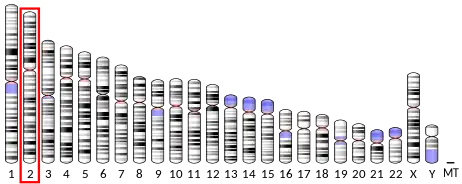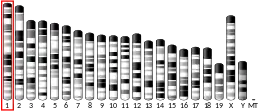| GPR45 | |||||||||||||||||||||||||||||||||||||||||||||||||||
|---|---|---|---|---|---|---|---|---|---|---|---|---|---|---|---|---|---|---|---|---|---|---|---|---|---|---|---|---|---|---|---|---|---|---|---|---|---|---|---|---|---|---|---|---|---|---|---|---|---|---|---|
| Identifiers | |||||||||||||||||||||||||||||||||||||||||||||||||||
| Aliases | GPR45, PSP24, PSP24(ALPHA), PSP24A, G protein-coupled receptor 45 | ||||||||||||||||||||||||||||||||||||||||||||||||||
| External IDs | OMIM: 604838 MGI: 2135882 HomoloGene: 5228 GeneCards: GPR45 | ||||||||||||||||||||||||||||||||||||||||||||||||||
| |||||||||||||||||||||||||||||||||||||||||||||||||||
| |||||||||||||||||||||||||||||||||||||||||||||||||||
| |||||||||||||||||||||||||||||||||||||||||||||||||||
| |||||||||||||||||||||||||||||||||||||||||||||||||||
| |||||||||||||||||||||||||||||||||||||||||||||||||||
| Wikidata | |||||||||||||||||||||||||||||||||||||||||||||||||||
| |||||||||||||||||||||||||||||||||||||||||||||||||||
Probable G-protein coupled receptor 45 is a protein that in humans is encoded by the GPR45 gene.[5][6]
This intronless gene encodes a member of the G protein-coupled receptor (GPCR) family. Members of this protein family contain seven putative transmembrane domains and may mediate signaling processes to the interior of the cell via activation of heterotrimeric G proteins. This protein may function in the central nervous system.[6]
References
- 1 2 3 GRCh38: Ensembl release 89: ENSG00000135973 - Ensembl, May 2017
- 1 2 3 GRCm38: Ensembl release 89: ENSMUSG00000041907 - Ensembl, May 2017
- ↑ "Human PubMed Reference:". National Center for Biotechnology Information, U.S. National Library of Medicine.
- ↑ "Mouse PubMed Reference:". National Center for Biotechnology Information, U.S. National Library of Medicine.
- ↑ Marchese A, Sawzdargo M, Nguyen T, Cheng R, Heng HH, Nowak T, Im DS, Lynch KR, George SR, O'dowd BF (May 1999). "Discovery of three novel orphan G-protein-coupled receptors". Genomics. 56 (1): 12–21. doi:10.1006/geno.1998.5655. PMID 10036181.
- 1 2 "Entrez Gene: GPR45 G protein-coupled receptor 45".
Further reading
- Kawasawa Y, Kume K, Nakade S, et al. (2000). "Brain-specific expression of novel G-protein-coupled receptors, with homologies to Xenopus PSP24 and human GPR45". Biochem. Biophys. Res. Commun. 276 (3): 952–6. doi:10.1006/bbrc.2000.3569. PMID 11027574.
- Kawasawa Y, Kume K, Izumi T, Shimizu T (2000). "Mammalian PSP24s (alpha and beta isoforms) are not responsive to lysophosphatidic acid in mammalian expression systems". Biochem. Biophys. Res. Commun. 276 (3): 957–64. doi:10.1006/bbrc.2000.3570. PMID 11027575.
- Strausberg RL, Feingold EA, Grouse LH, et al. (2003). "Generation and initial analysis of more than 15,000 full-length human and mouse cDNA sequences". Proc. Natl. Acad. Sci. U.S.A. 99 (26): 16899–903. Bibcode:2002PNAS...9916899M. doi:10.1073/pnas.242603899. PMC 139241. PMID 12477932.
- Gerhard DS, Wagner L, Feingold EA, et al. (2004). "The status, quality, and expansion of the NIH full-length cDNA project: the Mammalian Gene Collection (MGC)". Genome Res. 14 (10B): 2121–7. doi:10.1101/gr.2596504. PMC 528928. PMID 15489334.
- Hillier LW, Graves TA, Fulton RS, et al. (2005). "Generation and annotation of the DNA sequences of human chromosomes 2 and 4". Nature. 434 (7034): 724–31. Bibcode:2005Natur.434..724H. doi:10.1038/nature03466. PMID 15815621.
This article is issued from Wikipedia. The text is licensed under Creative Commons - Attribution - Sharealike. Additional terms may apply for the media files.




